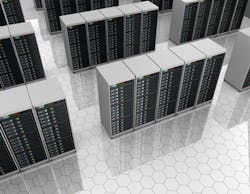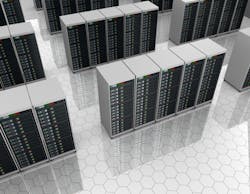Step 8: Understanding Cable Plant Technology
Understanding cable plant technology and capabilities is a key component when designing the cable plant layout. Following are questions to answer when determining the cable plant:
• Does the business require high bandwidth capabilities?
• What network topology design will be deployed (i.e., fabric switching or traditional switching)?
• What are the advantages and implications of using certain cable media types?
• What are the distance limitations of the data center design?
• What configuration will be used for access level switching (i.e., top of rack, end or row, middle of row or centralized)?
• What will be required in the future?
By deploying a modular approach using as many standardized cabinets as possible, the data center becomes industrialized and predictable with better port and space utilization. Modular design involves planning for the entire space, power and cooling requirements based on the company’s growth over the life of the facility. The design is broken into modules that can be added as the business requirements evolve. All shared infrastructure should be sized with the absolute final design in mind -- it is important to understand that modules will need to be plugged into this infrastructure with little or no interruption of services as growth occurs. This allows for better cost efficiencies and ease of operation.
Data center infrastructure management (DCIM) is also ideal for supporting asset inventory, cable plant connectivity, power management and reporting, and “what if” scenario planning. While it can seem rather early in the process to select a DCIM package, it can be a time consuming process to ensure that the package meets all requirements needed to serve the business. It also takes a significant amount of time to set up the DCIM templates and standard information to be tracked.
In summary, apply standardization, modularization and industrialization to as many components and pieces of the data center as possible. Understand the future applications and technology that will likely be deployed, and build in adaptability and flexibility to support them where possible. If you stay ahead of the curve and begin planning the pods or modules that will be built, it can allow for quick rollout of the IT equipment and the ability to double check calculations prior to construction. Also try to maximize the power load within a pod or equipment area before building out the next module. This allows the facility to operate at the maximum possible energy efficiency.

